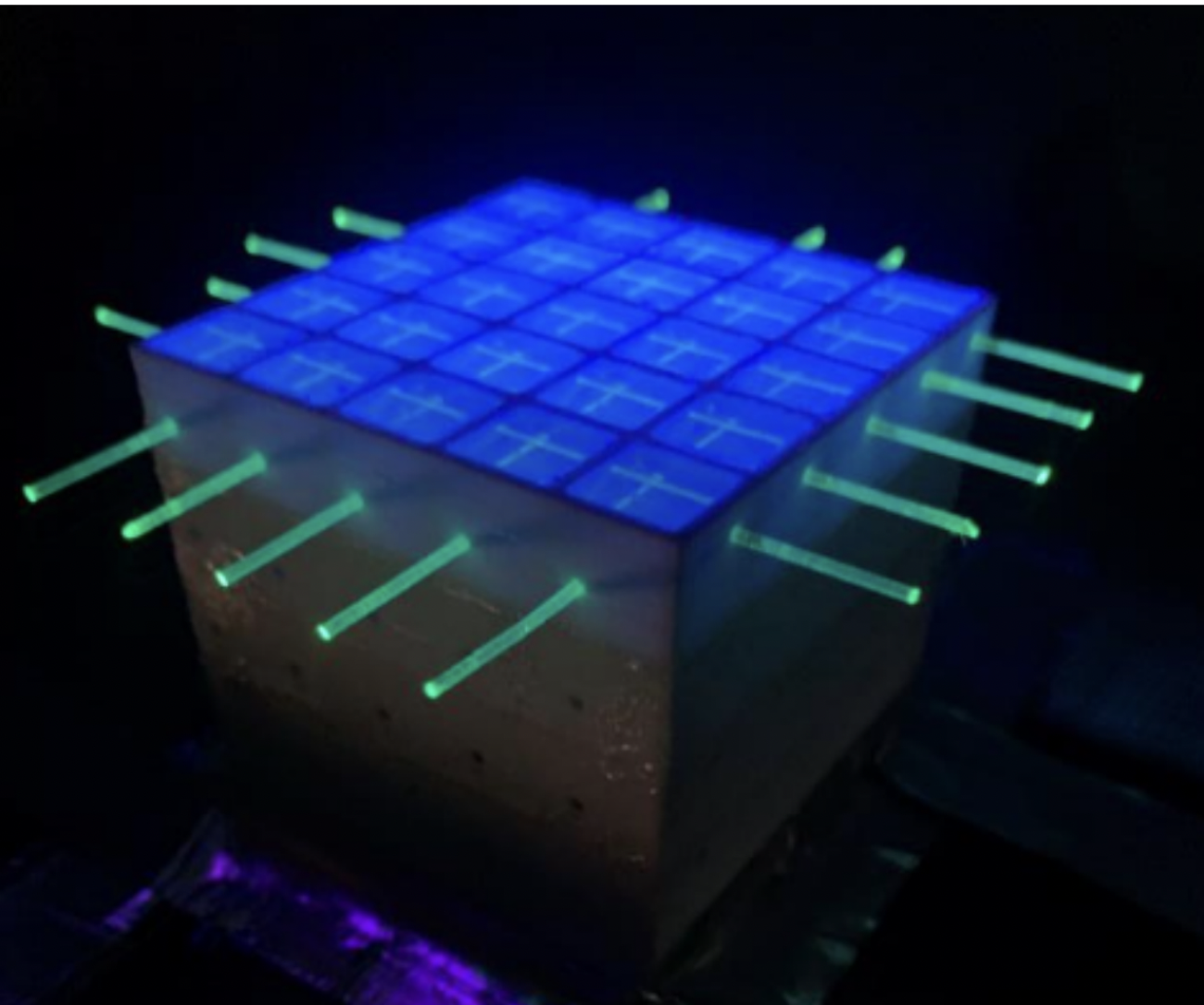Revolutionizing Particle Detection: 3D-Printed Scintillating Detectors for Tracking and Calorimetry

Plastic scintillator detectors, which are cost-effective due to the affordability of plastic materials, are extensively employed in high-energy physics experiments. They play a crucial role in identifying and tracking particles, conducting time-of-flight measurements, and, when combined with dense materials, are used in sampling calorimeters. The new generation of plastic scintillator detectors aims to instrument large active volumes with a fine 3D granularity to provide detailed 3D images of particle interactions, with obvious challenges in both the production and the assembly of these detectors. One example is the two-tonnes “Super Fine-Granularity Detector”, a neutrino active target made of 2,000,000 1 cm3 optically-isolated scintillating cubes [1] at the T2K experiment in Japan [2,3]. Scaling up this intricate workflow or aiming for more precise segmentation presents challenges, highlighting the necessity for technological innovation. Additive manufacturing emerges as a solution to meet these needs.
The 3D printed DETector (3DET) R&D Collaboration [4] hosted at CERN, that comprises the EP-Neutrino group, ETH Zurich, the Haute Ecole d'Ingénierie et de Gestion du Canton de Vaud (HEIG-VD) and the Institute for Scintillation Materials in Ukraine (ISMA), is advancing additive manufacturing methods to create these detectors, aiming to eliminate extra steps such as post-processing and machining, thereby significantly streamlining the assembly process [4,5,6].
The 3DET collaboration recently hit a groundbreaking milestone.
Initially, they demonstrated the feasibility of 3D printing using Fused Deposition Modelling with a polystyrene-based scintillating filament [7]. They then succeeded in creating a layer of optically isolated scintillating cubes using an innovative white reflector filament [8]. Further advancing their work, the team developed an inorganic scintillating filament [9], marking a significant leap in their research.
A prototype made of 5x5x5 optically-isolated scintillating cubes crossed by 1.1 mm diameter holes with a pitch of 1 cm was manufactured using these methods without the need of additional production steps. It was being instrumented with WLS fibres and readout electronics right after the printing process, providing two orthogonal views of particle interactions. In order to achieve this milestone, a new process, named Fused Injection Modelling, was developed: the optically-reflective mould was 3D printed with FDM and filled with melted plastic scintillator achieving a high fill factor and an excellent transparency. For the first time, a plastic scintillator detector with the dual capability of tracking particles and measuring energy loss has been completely produced using additive manufacturing! Cosmic particles could be detected and tracked, showing a scintillation light yield and crosstalk comparable to the state of the art of plastic scintillator detectors.

This achievement represents a substantial advance in facilitating the creation of intricate, monolithic geometries in just one step. It heralds a new, practical, and efficient approach for fabricating future scintillator detectors, regardless of their size and geometric intricacy.
Further reading
[1] A. Blondel et al., “A fully-active fine-grained detector with three readout views”, JINST 13 (2018) no.02, P02006
[2] K. Abe et al. (T2K Collaboration), “Constraint on the matter-antimatter symmetry-violating phase in neutrino oscillations”, Nature 580, no.7803, 339-344 (2020)
[3] K. Abe et al. (T2K Collaboration), “T2K ND280 Upgrade – Technical Design Report”, CERN-SPSC-2019-001 (SPSC-TDR-006)
[4] https://threedet.web.cern.ch
[5] https://ep-news.web.cern.ch/content/using-3d-printing-techniques-future-neutrino-detectors
[7] S. Berns et al 2020 JINST 15 P10019
[8] S. Berns et al 2022 JINST 17 P10045
[9] T. Sibilieva et al 2023 JINST 18 P03007
[10] T. Weber, arXiv:2312.04672 [physics.ins-det]
